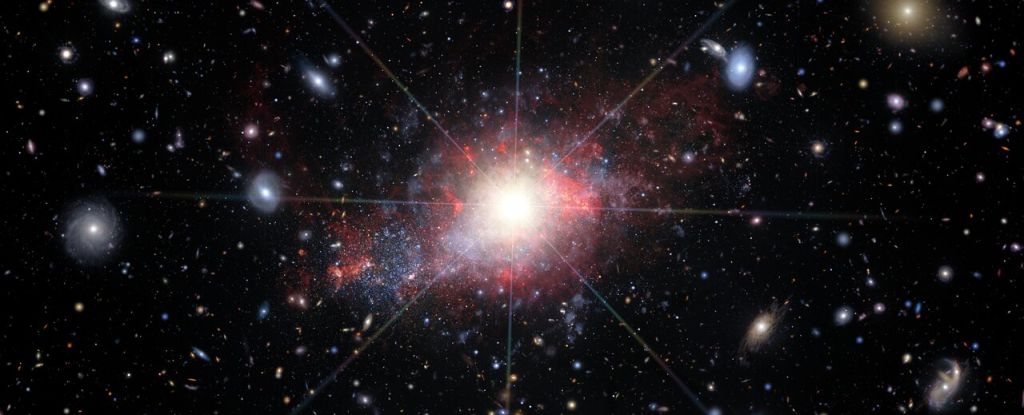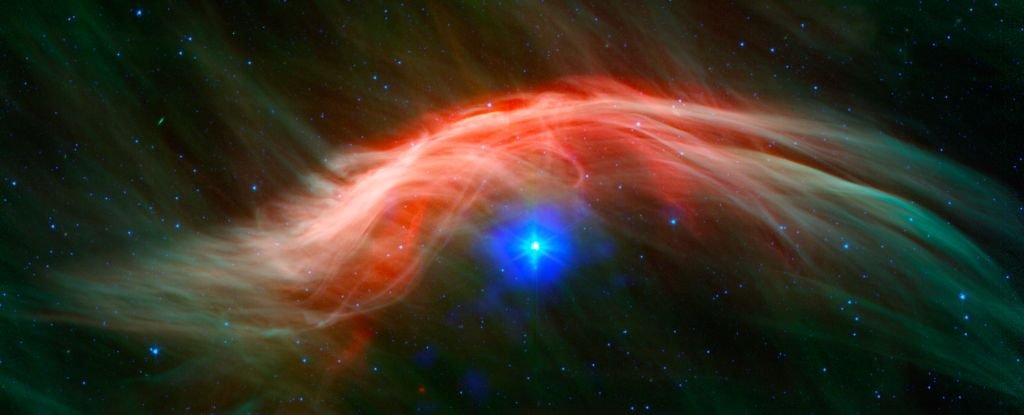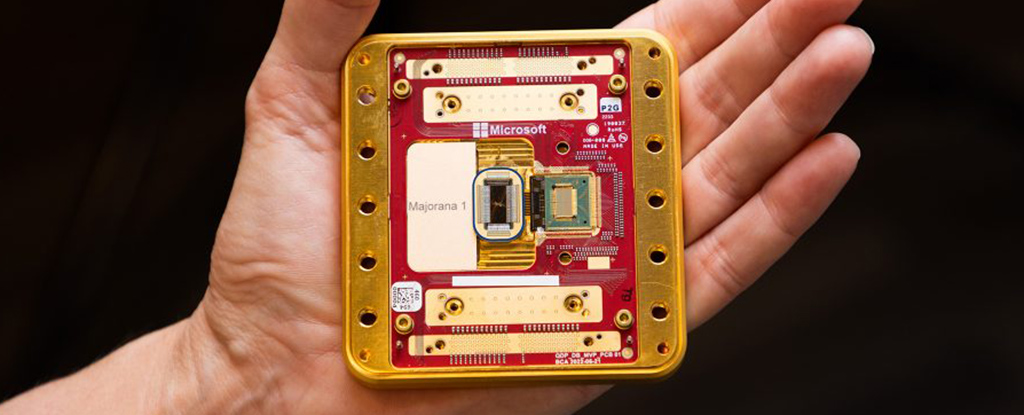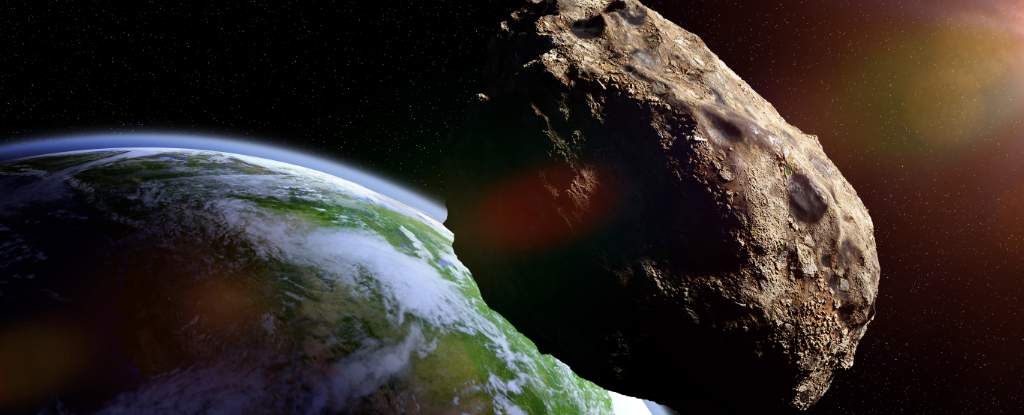A survey to reveal the unseen majority of the Universe has just turned up a treasure trove of black holes that may help solve one of the biggest mysteries of the cosmos.
Lurking at the centers of dwarf galaxies speckled throughout space, astronomers have found 2,444 active black holes, slurping up matter from material around them. And, even more amazingly, 298 of these appear to be that elusive beast, the black hole of intermediate mass – long considered a missing link between stellar-mass black holes and supermassive behemoths.
This is nearly triple the number of previously known intermediate mass black hole (IMBH) candidates, representing the largest haul to date – a discovery that has huge implications for our understanding of how black holes get to masses equivalent to millions or billions of Suns.
“The statistical sample of dwarf active galactic nucleus candidates,” the researchers write, “will be invaluable for addressing several key questions related to galaxy evolution on the smallest scales, including accretion modes in low-mass galaxies and the co-evolution of galaxies and their central black holes.”
frameborder=”0″ allow=”accelerometer; autoplay; clipboard-write; encrypted-media; gyroscope; picture-in-picture; web-share” referrerpolicy=”strict-origin-when-cross-origin” allowfullscreen>
Supermassive black holes can be found at the centers of all large, well-formed galaxies. They’re the nuclei around which galaxies revolve, and their masses are tremendous. The supermassive black hole at the center of the Milky Way, for example, is 4.3 million times the mass of the Sun. That’s on the low end of the mass scale; these beasts can reach masses that are tens of billions of solar masses.
We don’t know how these black holes grow so big. Current theoretical models propose that one pathway is growth via accretion and mergers, growing with their galaxies; but our current technology doesn’t allow us to see the “seeds” of these black holes in the early Universe. They are simply too small and too dim.
What we can do, however, is look for equivalent small galaxies with small black holes in the local Universe. And, using the Dark Energy Spectroscopic Instrument (DESI), an instrument designed to survey the Universe, this is what a team led by astronomer Ragadeepika Pucha of the University of Utah has done.
In its first year of operations, the terrestrial observatory collected observations of 114,496 dwarf galaxies – in high enough detail that the astronomers could zoom in and study their centers closely, looking for signs of black holes that are actively feeding, known as an active galactic nucleus.
“When a black hole at the center of a galaxy starts feeding, it unleashes a tremendous amount of energy into its surroundings, transforming into what we call an active galactic nucleus,” Pucha says. “This dramatic activity serves as a beacon, allowing us to identify hidden black holes in these small galaxies.”
The number of active galactic nuclei they identified in dwarf galaxies – 2,444 – represented 2.1 percent of the total dwarf galaxy sample. That’s a huge number, nearly four times higher than the fraction found in previous surveys.
This means that there are likely way more low-mass supermassive black holes out there than we had been able to account for based on previous data.
The observations were so detailed that the team was able to use them to try to calculate the masses of the black holes they were looking at. From these calculations, the researchers identified nearly 300 IMBH candidates, sitting between around 100 and 100,000 times the mass of the Sun.
Black holes in this mass regime are highly sought by astronomers, because they’re shockingly rare. We know that a massive, dying star can produce a black hole, but the upper mass for these single-star objects is a few tens of solar masses. What we don’t have is a good sample of objects that explain how these (relatively) tiny black holes can grow to supermassive size.
We do know that black holes can merge to produce bigger black holes. A really solid sampling of IMBH in that mass gap would go a long way towards helping solve at least part of the mystery, giving us a pile of evidence that the process can, eventually, produce some absolute black hole units.
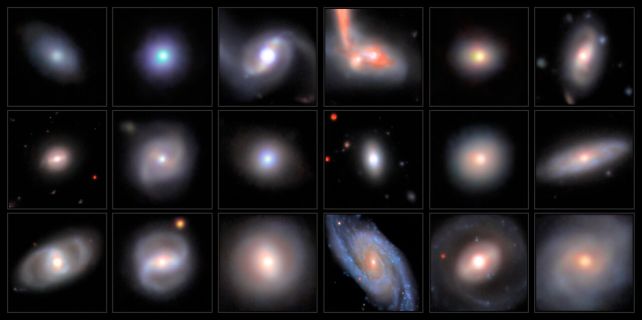
The team’s new haul may just give us this sampling. Previously, only around 100 to 150 IMBH candidates had been identified. The work of Pucha and her colleagues gives us 151 confident candidates, and 147 tentative candidates. At the very least, it seems to have more than doubled the previous catalogue.
And already it’s toppling our expectations. Only 70 of the IMBH candidates they found were in dwarf galaxies. The rest were hanging out in normal galaxies. This suggests that the coevolution of black holes and galaxies may not be as simple as we thought.
And that’s just from DESI’s early data. There is so much more out there waiting to be discovered, and so many questions yet to answer.
“For example, is there any relationship between the mechanisms of black hole formation and the types of galaxies they inhabit?” Pucha says. “Our wealth of new candidates will help us delve deeper into these mysteries, enriching our understanding of black holes and their pivotal role in galaxy evolution.”
The research has been published in The Astrophysical Journal.


